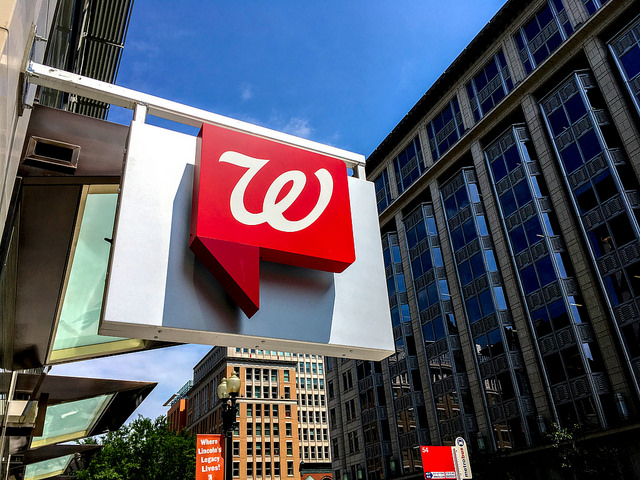We recently took a dive into the world of retail APIs to better understand the landscape, and we found ourselves falling down a rabbit hole of opportunities when it came to understanding what is happening across the retail landscape. While there is no single place to get a complete view of the landscape, there are a dizzying amount of services that allow the right person to paint a pretty compelling picture, with a variety of colors being applied.
When looking for retail APIs the first thing many think of are the big retailers like Best Buy, Walmart, and Walgreens, who all have their own API programs. There really isn’t much value in these ecosystems when it comes to trying to understand the landscape, as the retailers are just looking to provide access to their product catalogs, and really don’t emit many other signals that would help someone trying to understand the landscape.
Beyond these straightforward POS providers, there are some other leading candidates like Shopify, and BigCommerce who span the virtual commerce, as well as the retail POS world, but also connect users with leading marketplaces, auction sites, and social commerce opportunities–reflecting the next generation in commerce. We would be negligent if we didn’t mention Quickbooks, as a player in this, with their POS system, but also because of their dominance in the accounting space, and being able to connect the dots regarding commerce in other ways.
Beyond the ordinary, we began looking at the more unusual and unique. Beginning with the cash to digital commerce provider Incomm, who connects the under-banked at the POS. Then it was interesting to see what Moltin does with their virtual commerce solutions which extend to signage, display, and commerce and the augmented reality provider Aisle411. Then moving into the emerging self-service POS and commerce space, with the newer provider Tray, who points to another direction that the world of self-service commerce is headed.
Next, we found ourselves thinking about how people find retail stores, places to eat, and other destinations. Leading us to the obvious players Yelp knowledge, and Foursquare. As well as some other lesser providers who offer interesting location-based retail proximity services like Near, Factual, and Proxim.io. Putting the geo-fencing into the retail landscape, showing us how to track users, and understand what they are doing.
Then we find ourselves looking through a suite of different data providers like Ant, helping with retail inventory, and Uber Media also focusing on mobile, location, and retail data. Then Alkemics focusing on retail collaboration, Yodlee aggregating sales data, and Intelligence Node, and Repsly helping retails stores make sense of their business and optimize everything through better analytics.
Which then led us to a whole stack of interesting retail and commerce analytics providers like ShopperTrak, RetailNext, Countbox, Kinexon, StackLine, and even Nielsen provides a wealth of data on brands. Which is just the tip of the retail analytics API realm, helping retails optimize their business, but also providing wider opportunities for understanding the world of retail commerce, and what is happening on the ground.
Then we wanted to begin thinking out of the box and start looking at how retail stores are keeping track of the foot traffic at their stores with providers like Placer, Blix, Dor, TraxSales, and Iris. While also looking real quick at the potential of understanding real-world activity with publicly available surveillance cameras with Earthcam, Webcams.Travel, and TrafficVision. Providing another lens to look through while considering who is out in the world shopping, eating, and being good consumers.
One last area we started exploring to get a handle on commerce was taking a quick look at what receipt and transaction data APIs were available with providers like the Information Machine API, as well as receipt scanning services like Expensify, Taggun, and Itemize. While the Information Machine API is the only one providing access to wider data, the others are likely to have partner programs that offer access to other aggregate and industry-level data. Providing a quick look at what is possible with receipts, but we noticed there was a whole other world to crack here when it comes to payment API providers system receipt, as well as email receipts sent through transactional email solutions–we’ll tackle that in another round of research.
We are continuing to profile this layer of the API space using OpenAPI definitions, which will better define the topics available here, but so far we’ve built the following tag cloud: Point of Sale, Commerce, Payments, Shopping, Pricing, Products, People Counting, Door Counting, Car Counting, Surveillance Camera, Traffic Camera, Retail Data, Geolocation, Geofencing, Location, Receipt, Transactions, Sales Data, Analytics, Analysis, Inventory, and Self-Service. Providing a pretty compelling snapshot of signals that can be tuned into when trying to understand what is happening in the world of commerce. The next round of profiling will expand this topical tag cloud to include much more precise metadata about what each of these providers offers, helping us better refine the search for data across these providers.
Of course, there are many other areas we could have kept falling down this rabbit hole, looking at economic data from CEIC, as well as retail data from the Federal Reserve Bank of Saint Louis and Census, but we had to draw the line somewhere. We can keep going down different areas of this research, considering location data further, looking more at sensors and cameras, but for this snapshot of the world of retail and online commerce, this should provide enough of a compelling look at what is available via APIs, and demonstrate a little more about what we provide through the Streamdata.io API Gallery discovery services.
